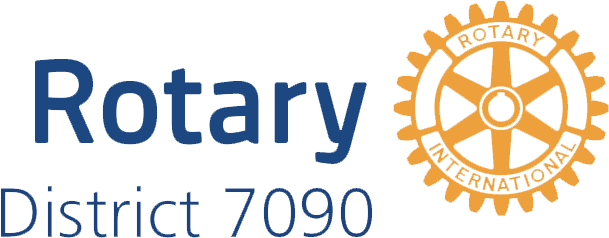| ||
| ||
1. Does our Rotary club effectively follow-up on the decisions we have made?
A common challenge for clubs is implementing what has been decided.
Usually, the officers (president, treasurer etc) and the collective board of directors of clubs do not have difficulty in making decisions: for example, how will we meet during COVID19?; when will we run our annual fundraiser?; will we become an “every member, every year” club for Rotary Foundation donations?
As ‘people of action’ making decisions is the easy part.
The real challenge after a decision has been made is to ensure that the club implements the decision or, when necessary, revisits it. An example is the need for clubs to change course in how they will hold their post-pandemic meetings. Do we need a new ‘hybrid’ model that many clubs are exploring?
A reason that clubs may be challenged in following-up on decisions is the lack of an effective system of minute-taking. Best practices suggests that after a meeting at which decisions were made, minutes should be circulated within one week to those who attended. But timely minutes alone are not sufficient.
It is important that, at the next and subsequent meetings, previous minutes are reviewed and, as needed acted on. Remember where we described governance as the system by which a club is ‘directed’ and ‘controlled’?
‘Direction’ is easy; that is where we make the initial decision. ‘Control’ is the tough part. That means ensuring once made, we stick to a decision, implement it and measure and monitor how the decision is turning out.
One way that a club can do this is ensuring that at board and committee meetings, minutes of past meetings are more than just a perfunctory motion to approve: there should be a real review of the past minutes (not just of the last meeting but of all relevant previous meetings) and follow-up should happen as to whether the club is implementing the decisions made.
If there are a lot of decisions to follow-up on, it may be a good idea to add an ‘open issues’ tracking list to your regular agenda. This way everyone knows where each decision stands. The person who takes the minutes should be well-supported in their function with everyone understanding their importance to the Rotary club’s governance system.
2. Is it clear among the Board and the officers as to who should be proposing and making decisions for our Rotary club?
A ‘best practice’ for all types of governance is to ensure that there are clear and unambiguous roles among the members, directors, and officers. In practice, this means that it should be clear to everyone in your club as to who should be proposing decisions to be made and who should be deciding on those decisions.
Larger clubs will generally want to organize themselves so that most of the proposals are coming from the committees, directors, and officers. It will be rare in a large club for members at a club assembly to be able to directly propose significant action for the club.
In smaller clubs, it may be common for the general membership to consider important decisions together and have a consensus among all members before proceeding.
There is no right or wrong answer to the question as to where proposals should come from or who makes those decisions. However, if it is not clear what processes your club has chosen to use, then we know that trouble is likely to ensue.
A lack of clarity in outlining roles and responsibilities will lead to people being confused as to who should be making proposals and deciding on those proposals. Confusion can quickly compound into full-blown problems for a club. Meeting formats where we are not in each others physical presence may just serve to add to the confusion.
A solution is simple: make sure your club has clearly outlined procedures on proposing and making decisions. Your club’s system should be easy to find in the bylaws of your club which you should revisit regularly.
3. Does our Rotary club have our processes written down in easily understood language?
This is an extension of the previous question. Let’s consider an aspect of this: why should we ‘write down’ our processes? Isn’t our club simple enough? Why do we need to get all bureaucratic and start writing things down?
There are a lot of good reasons to write things down: I use a ‘shopping list’ even if I have less than a half-a-dozen items to buy. Am I really getting that old that I can’t recall what I want to buy?
Not really, I have used shopping lists for a long time. Why?
If I write things down, it helps record exactly what I want to pay attention to. My chances of making an ‘impulse buy’ are less. Once I write things down, I can clear my mind of the items until I am in the store. Clearing my mind is a great stress-reliver.
When I start writing things down, I think of other things I might want to buy or realize that there are things on the list I may already own and have forgotten about. When I cross things off on my list in the store, I have a sense of accomplishment and it motivates me.
Is it any different for writing down what our club needs to do? Likely not.
When we take time in our Rotary club to write down simple things like our usual meeting order and how we invite speakers, it helps everyone ensure that we are “on the same page”. It’s tough to be “on the same page” if there is no page!
The most important written documents that a club has are its constitution and its bylaws. However, its likely since these documents were first written for your club, neither the board of directors nor the members has really looked at either of them.
In part, this is because the language used is very legalistic.
The lawyers in the club will say: ‘well, that is how bylaws – which are a legal document – should be written.’ We say if the documents are written using language that members have trouble reading, then we ought to change the language! What good are documents if people have trouble understanding them?
Some of the best speakers we invite for our club programs take difficult concepts and express them in terms that we can all understand. Why can’t we do this for our own bylaws?
Here is a simple action item that we would like to leave you with: in the next 3 months, ensure that you put a discussion of your bylaws on the agenda for your board of directors. Ask yourselves the previous three questions and then consider if you need to change your bylaws.

 This article is one in a continuing series of articles produced by the D7090 Governance Committee. The intention of the material presented is to have Rotary clubs in the district consider their governance and, if required, to make changes. Additional direction and resources are available on the district website at:
This article is one in a continuing series of articles produced by the D7090 Governance Committee. The intention of the material presented is to have Rotary clubs in the district consider their governance and, if required, to make changes. Additional direction and resources are available on the district website at: